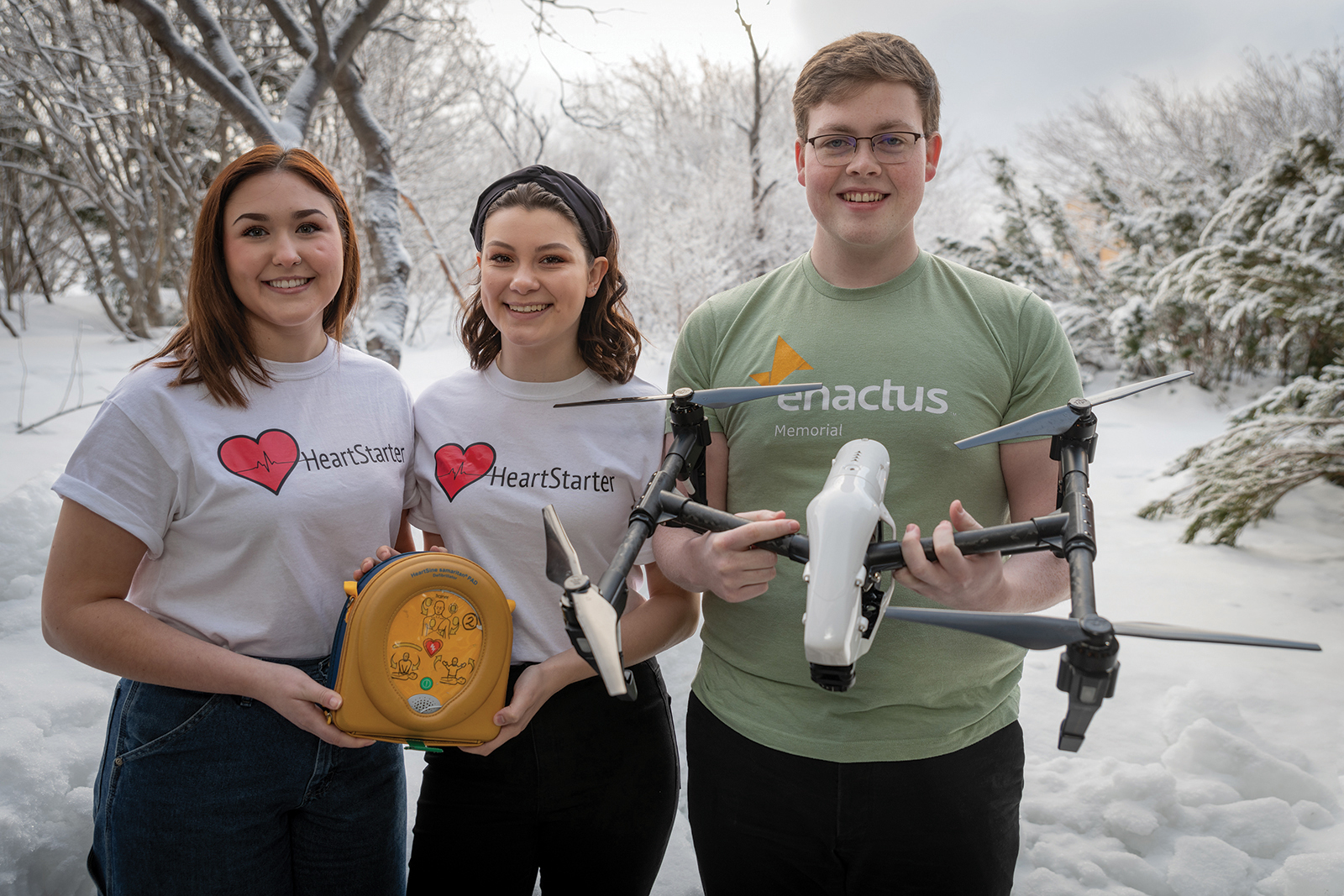One group of MUN students are flying high with their life-saving project, HeartStarter
====
Hannah Blundon is in her fourth and final year at Memorial University, and the very busy business student has had some very productive years, including work she’s done on an incredible project called HeartStarter.
Innovative project
 Working through Enactus, Canada’s largest experiential learning platform for post-secondary students whose goal is challenging students to use business to create positive change in their communities, a group of students at MUN, including Blundon, have worked on a novel way to provide Automated External Defibrillators (AEDs) using drone technology which increases the chance of survival for cardiac arrest victims in Newfoundland and Labrador.
Working through Enactus, Canada’s largest experiential learning platform for post-secondary students whose goal is challenging students to use business to create positive change in their communities, a group of students at MUN, including Blundon, have worked on a novel way to provide Automated External Defibrillators (AEDs) using drone technology which increases the chance of survival for cardiac arrest victims in Newfoundland and Labrador.
The group will be presenting their innovative project at an upcoming Enactus Canada Regional Exposition held in Halifax on March 20. The students will compete amongst other schools throughout Atlantic Canada for qualification to the National Exposition held in Toronto in May.
The idea was brought forward by Jon King of Drone NL and Mathias Nielsen of Creative Maple.
“They had this idea to use drones to bring AEDs to people who go into cardiac arrest. This had been done over in Europe and they thought it would be great to do it here. Jon King came to us with the idea and said that he’d be willing to help since he has a drone business. So it kind of started from there. We’ve just been rolling with it since,” Blundon says.
The way it works, she explains, is this way, “If you’re with someone and they go into cardiac arrest, you call 911, then E.M.S., a fire truck or an ambulance, will be dispatched. But along with that, a drone equipped with an AED will be dispatched as well.”
Matter of life or death
The drone will get to someone in need faster, essentially because it travels as the crow flies, so to speak.
“The importance of that can be a matter of life or death, because for every minute that passes that you’re in cardiac arrest, your chance of survival decreases by seven to 10 percent. So time is actually crucial. On average, an emergency vehicle can normally get to you in six minutes if you’re in a bigger community, but if you’re in a rural community, it could take up to 20 minutes. Your chance of survival could be slim to none.”
Blundon says their goal is to have drones stationed in enough places throughout Newfoundland and Labrador that it can reach anywhere within a fifteen kilometer radius in minutes. “The best chance of survival is to have (AEDs) within three or four minutes of every community.”
Life saving potential
Some, who are unfamiliar with AEDs may think access without knowledge isn’t helpful. They’d be incorrect.
“One problem that we’ve been facing is that a lot of people don’t think that they can use an AED so we’re trying to create awareness about this and say they can. Anyone can. It’s completely self explanatory, especially if you’re on the phone with 911. They’ll be explaining the steps as well, but the AED, as soon as you open it, it starts talking to you. It tells you exactly where to put the pads, when to do compressions. You don’t have to have ever used one or even heard of one before.”
Blundon shares she and her team are very excited by their project’s life saving potential, but they are not the only ones.
“We are very proud of what we’ve done. We’re very excited. We’re also excited about how excited everyone else is. The response from the community and from friends and family and from everyone is just incredible. People are reaching out to us, thinking that this is a really great project and that it’s brilliant. That has helped us because at first we were nervous that people might think it won’t work. People are like, ‘this is going to work. This is great. This is what our province needs.’ It makes all the hard work worth it.”
For more visit: projectheartstarter.com
